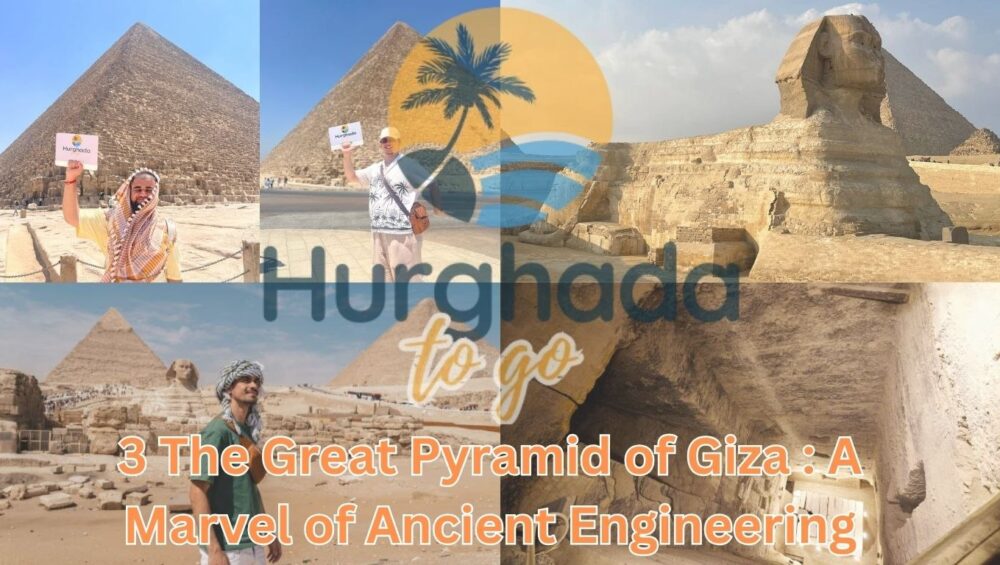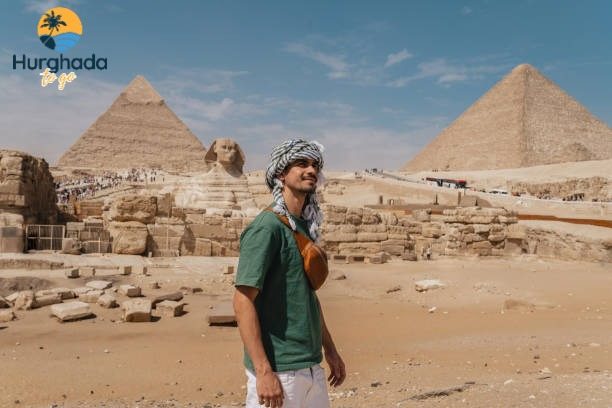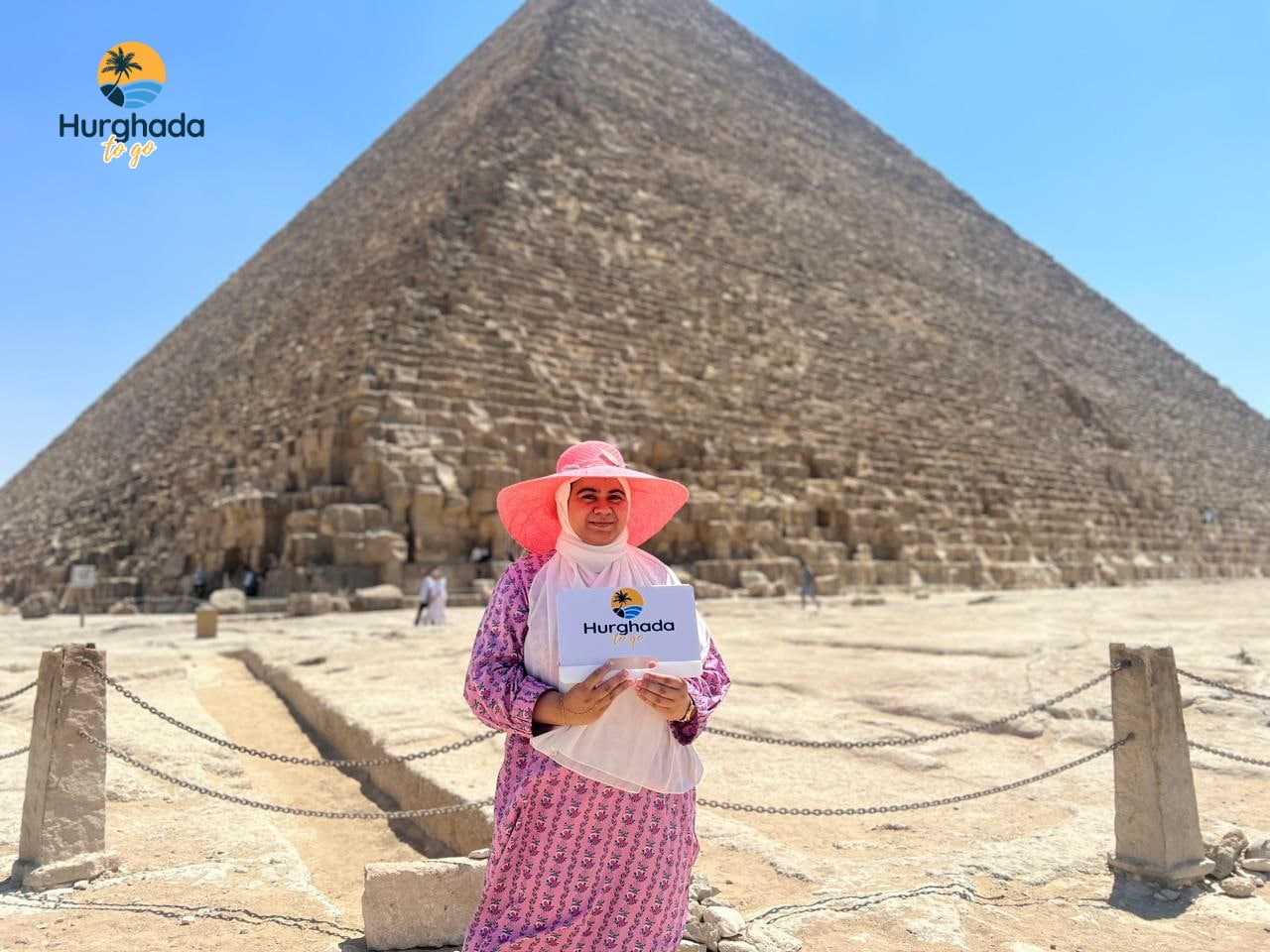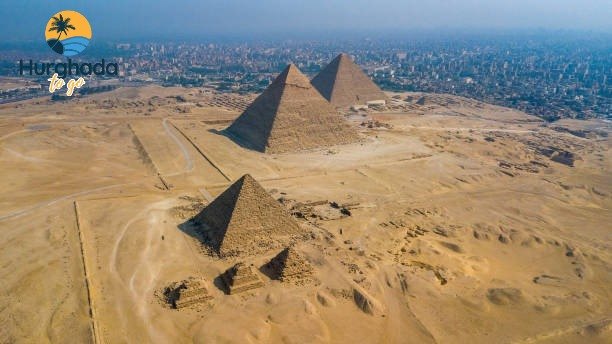The Great Pyramid of Giza stands not only as a symbol of ancient Egypt’s grandeur but also as one of the greatest architectural feats in human history. Located on the Giza Plateau just outside Cairo, this towering monument has captivated the imagination of travelers, archaeologists, and engineers for over 4,500 years.
As the last remaining wonder of the ancient world, the pyramid continues to inspire awe with its sheer size, precise alignment to the cardinal points, and the mysteries hidden within its stone chambers. Built during the reign of Pharaoh Khufu, it once soared to a height of 481 feet (147 meters), composed of over 2.3 million limestone blocks, some weighing as much as 15 tons.
Whether you’re drawn by its historical significance, fascinated by its unsolved engineering puzzles, or simply planning a visit to one of the world’s most iconic sites, this guide will take you deep into everything you need to know:
from the Great Pyramid’s location, to how it was built, fascinating facts, ticket prices, and how to make the most of your trip.
Let the Great Pyramid of Giza take you on a journey through time—where science meets myth, and ancient ambition meets eternal legacy.

Where Is the Great Pyramid of Giza?
The Great Pyramid of Giza is located on the Giza Plateau, on the outskirts of Cairo, Egypt’s capital. Specifically, it lies in the Al Giza Desert, about 13 kilometers (8 miles) southwest of central Cairo. This historic site is part of the larger Giza Necropolis, which includes the pyramids of Khafre and Menkaure, the Great Sphinx, and various tombs and temples.
Getting to the pyramid is easy and convenient. From Cairo International Airport, it takes around 45 minutes to 1 hour by car, depending on traffic. Most travelers take a private taxi, Uber, or a guided tour that includes hotel pickup and drop-off. The area is also accessible by public transport (metro + microbus), though not recommended for first-time visitors.
Visitors can explore the Giza Plateau on foot, or rent a camel, horse, or golf cart to navigate the expansive site comfortably. A typical visit includes access to the Great Pyramid’s exterior and, with a separate ticket, the opportunity to enter the interior chambers for a closer look at ancient engineering.
Whether you’re staying in downtown Cairo or Giza city, a journey to this awe-inspiring structure is not just a visit — it’s a step back into the heart of ancient Egyptian civilization.
When Was the Great Pyramid of Giza Built?
The Great Pyramid of Giza was built around 2,560 BCE, during the Fourth Dynasty of Egypt’s Old Kingdom, making it over 4,500 years old. Commissioned by Pharaoh Khufu (also known by the Greek name Cheops), this colossal structure served as his royal tomb and remains one of the greatest architectural feats in human history.
Construction is believed to have taken approximately 20 to 30 years, involving tens of thousands of skilled laborers, not slaves as once thought. These workers lived in nearby temporary cities, with archaeological evidence showing they were well-fed and housed — a testament to the project’s national importance and sophisticated organization.
At the time of its completion, the Great Pyramid stood at an incredible 146.6 meters (481 feet) tall, making it the tallest man-made structure in the world for over 3,800 years — a record only surpassed in the 14th century by the Lincoln Cathedral in England.
The construction techniques remain a topic of scholarly debate, with theories ranging from straight and circular ramps to ingenious use of counterweights and levers. Regardless of the method, the precision and scale of the pyramid continue to astonish architects and engineers to this day.
How Long Did It Take to Build the Pyramid?
Building the Great Pyramid of Giza was a monumental task that took an estimated 20 to 30 years to complete. This astonishing timeline reflects not only the architectural ambition of Pharaoh Khufu, but also the extraordinary coordination and labor involved in the project.
Archaeologists believe that the workforce consisted of approximately 20,000 to 30,000 skilled laborers, organized into rotating crews. Contrary to earlier myths, these workers were not slaves—they were well-fed, housed in nearby worker villages, and likely worked on a seasonal basis during the Nile’s annual flooding when farming was impossible.
The pyramid is made of over 2.3 million limestone and granite blocks, each weighing between 2.5 to 15 tons. Transporting, shaping, and precisely placing each stone required advanced engineering, logistical planning, and relentless human effort. Tools made of copper, stone, and wood were used to carve the blocks, while sleds, ropes, and lubricated ramps helped move them across the desert.
This feat of engineering—completed without modern machinery—remains one of the greatest achievements in ancient construction, highlighting the power and organizational capability of ancient Egyptian society.

Incredible Facts About the 3 Pyramids of Giza
The three Pyramids of Giza—Khufu (Great Pyramid), Khafre, and Menkaure—stand as timeless monuments to ancient Egypt’s engineering, astronomy, and spiritual vision. Here are 10 incredible facts that highlight their magnificence:
Perfect Alignment: The sides of the Great Pyramid are aligned almost perfectly with the cardinal directions (north, south, east, west)—within a fraction of a degree.
Unmatched Size: The Great Pyramid of Khufu was originally 481 feet (146.6 m) tall, making it the tallest man-made structure in the world for over 3,800 years.
Massive Materials: It consists of about 2.3 million stone blocks, each weighing 2.5 to 15 tons—in total, over 6.5 million tons of stone.
Precise Angles: The pyramid’s angle of inclination is exactly 51°50′40″, optimized for structural stability.
Labor Force: Contrary to myth, the pyramids were not built by slaves. Instead, around 20,000 to 30,000 skilled workers lived in organized labor villages with food, medical care, and accommodations.
Khafre’s Illusion: The Pyramid of Khafre appears taller than Khufu’s because it sits on higher ground, even though it is slightly smaller at 471 feet originally.
Smooth Casing Stones: The original pyramids were covered in polished white Tura limestone, which reflected sunlight and made the pyramids shine like “jewels in the desert.”
Menkaure’s Unfinished Temple: The smallest of the three pyramids, Menkaure’s, still had unfinished granite casing at its base—revealing insight into the building process.
Astronomical Connection: Some believe the three pyramids mirror Orion’s Belt, suggesting a celestial alignment linked to ancient Egyptian cosmology.
Interior Mysteries: Hidden voids like the recently discovered “Big Void” inside Khufu’s Pyramid remain unexplored—fueling theories about hidden chambers or lost knowledge.
These facts only scratch the surface of what makes the Giza Pyramids one of the world’s most enduring wonders. Their size, precision, and mysterious construction techniques continue to fascinate historians, engineers, and travelers alike.
Who Built the Great Pyramid of Giza?
The construction of the Great Pyramid of Giza has long been surrounded by mystery and myth, but modern archaeology has uncovered compelling evidence revealing who truly built it — and how.
Not Slaves, but Skilled Workers
Contrary to the popular myth that slaves built the pyramids, excavations near the pyramid complex uncovered workers’ villages, complete with bakeries, breweries, medical care, and dormitories. These findings indicate that the builders were well-fed, organized into rotating crews, and respected professionals in their time.
The Workforce
Historians estimate that around 20,000 to 30,000 laborers participated in the construction. This included:
Stonecutters who shaped massive limestone and granite blocks.
Engineers who designed the structure with incredible precision.
Surveyors & architects who aligned the pyramid to true north with near-perfect accuracy.
Transport teams who moved blocks from quarries using sledges and water-lubricated sand.
Directed by Pharaoh Khufu
Commissioned by Pharaoh Khufu (reign ~2551–2528 B.C.), the pyramid was built as his royal tomb. Ancient graffiti found inside hidden chambers include inscriptions of workers’ teams like “The Drunkards of Menkaure” or “The Friends of Khufu”, further proving their loyalty and pride in the project.
The Masterminds
While no single architect is named in history, many believe the chief architect may have been Hemiunu, Khufu’s vizier and royal relative, credited with overseeing the engineering and labor logistics.
Myths vs. Facts
Myth: Aliens or advanced lost civilizations built the pyramid.
Fact: Egyptian engineering and manpower were more than capable, and there’s clear archaeological evidence to support this.Myth: Slave labor powered the construction.
Fact: Laborers were paid and honored workers, not enslaved people.
The Great Pyramid of Giza stands not only as a monument to a pharaoh’s glory, but as a celebration of the human ingenuity and collective effort of ancient Egypt.
What Do the Three Pyramids Represent?
The Three Pyramids of Giza — Khufu, Khafre, and Menkaure — are not just architectural wonders; they are deeply symbolic monuments that reflect the spiritual beliefs, cosmic understanding, and royal legacy of ancient Egypt.
The Pyramid Shape: A Divine Design
The pyramid’s triangular form was not chosen at random. Its shape represents the rays of the sun — a sacred symbol in Egyptian mythology — and was believed to help the pharaoh’s soul ascend to the heavens. Pointing toward the sky, the pyramid connected the earthly realm to the divine world of the gods.
Alignment with the Sun & Stars
Each of the three pyramids is precisely aligned with the cardinal points (north, south, east, west), and some researchers suggest that the layout may reflect the three stars of Orion’s Belt, which was associated with Osiris, the god of the afterlife. This celestial connection reinforces the idea of the pyramids as gateways to eternity.
Spiritual Symbolism: Journey to the Afterlife
In ancient Egyptian religion, the afterlife was of supreme importance. The pyramids were not just tombs, but carefully designed structures to ensure the pharaoh’s immortality. They were built to protect the king’s body, preserve his soul (ka), and provide him with all the tools needed to live eternally among the gods.
Three Pyramids, One Message
While each pyramid is dedicated to a different ruler:
Khufu’s pyramid (the Great Pyramid) emphasizes power and divine connection.
Khafre’s pyramid is slightly smaller but appears taller due to elevation and retains some outer casing stones at the top.
Menkaure’s pyramid is the smallest, yet showcases refined architecture and detail.
Together, the three form a sacred necropolis, symbolizing the trinity of royal power, religious devotion, and cosmic harmony.
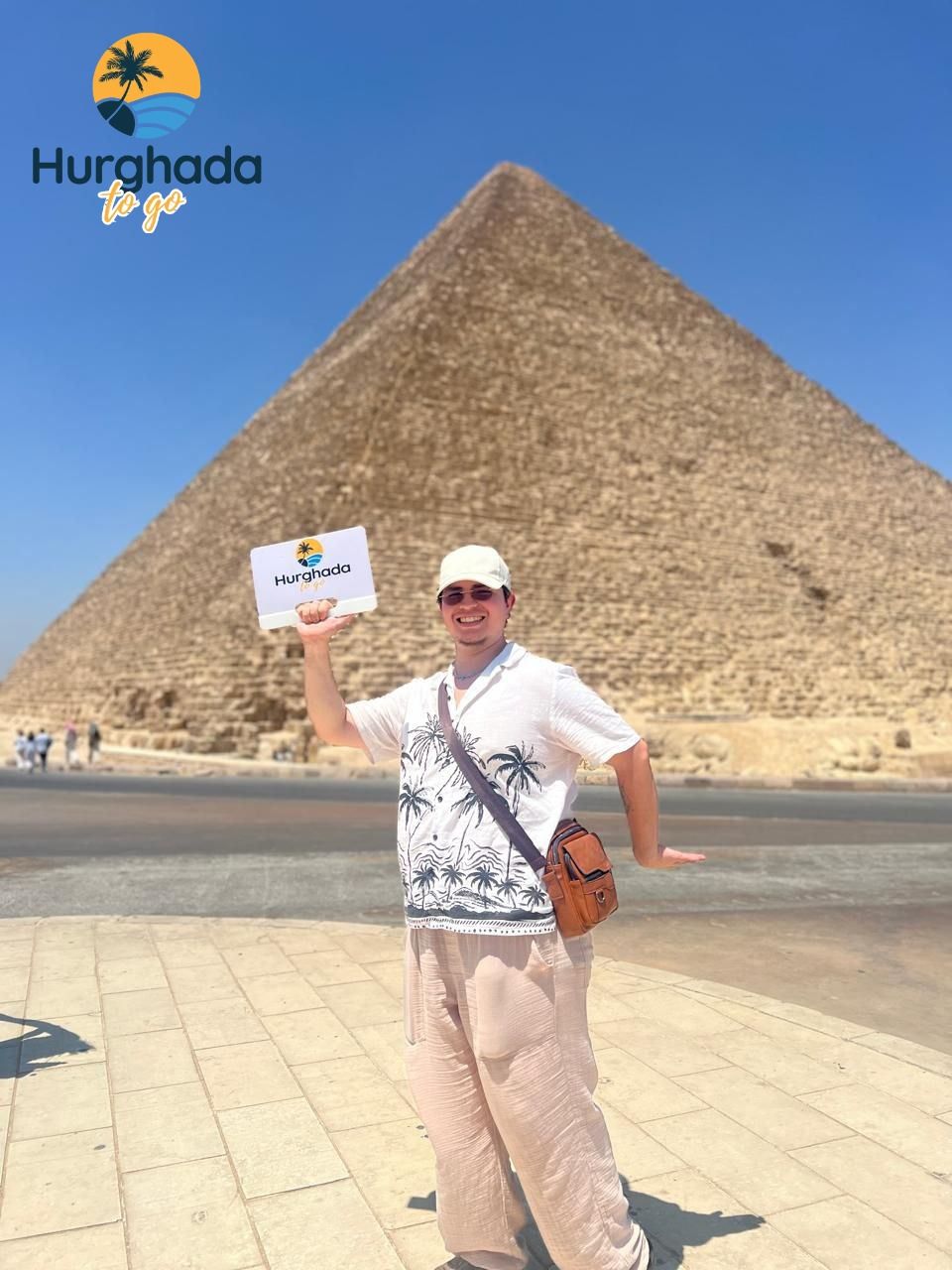
What’s Inside the Pyramid of Giza?
Delving inside the Great Pyramid of Giza reveals a fascinating network of chambers, passages, and mysterious voids that have intrigued archaeologists and visitors alike for centuries. The pyramid houses the King’s Chamber, where Pharaoh Khufu’s sarcophagus rests, built from solid granite blocks that have stood the test of time. Nearby lies the Queen’s Chamber, whose exact purpose remains a topic of debate among experts.
Connecting these chambers is the impressive Grand Gallery, a towering, corbelled corridor that showcases ancient Egyptians’ remarkable engineering skills. Adding to the intrigue is the discovery of the “Big Void”, a massive, unexplored cavity detected in 2017 through cosmic-ray imaging technology, hinting at hidden spaces still waiting to be uncovered within this ancient marvel. Exploring the interior offers a glimpse into the genius and mystery that have kept the Great Pyramid a timeless wonder.

The Great Pyramid of Giza Tickets & Visiting Tips
Planning your visit to the Great Pyramid of Giza? Knowing the ticket options and practical tips can make your experience seamless and memorable. Entry tickets typically range around 200 EGP for adults, with discounted rates for students and children. Visitors can purchase general admission tickets that allow access to the pyramid’s exterior, or opt for special tickets granting entry inside the pyramid’s chambers, which are limited and often sold separately.
The site is open daily from 8:00 AM to 5:00 PM, with the best visiting hours early in the morning or late afternoon to avoid the midday heat and crowds. To enhance your visit, consider hiring a knowledgeable local guide or joining a guided tour to uncover the pyramid’s hidden stories and archaeological wonders. Don’t forget to wear comfortable shoes, bring water, and respect the site’s preservation rules to enjoy a truly unforgettable adventure at this ancient wonder.

